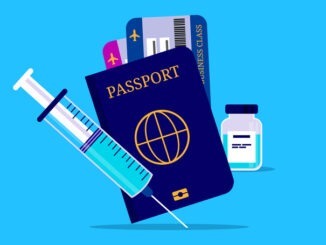As reported by NHS England, new figures reveal the fourth consecutive drop in waiting lists amidst record-breaking industrial action, highlighting staff resilience and innovative approaches to patient care
New monthly data published today shows the waiting list continues to fall with January data showing it is down by 27,761 from the previous month (7.58 million in January versus 7.60 million in December) with a total decrease of 192,659 since September (7.77 million). The number of patients waiting also fell by 43,053 in January (6.32 million versus 6.37 million in December) and is now 174,056 lower than in September (6.5 million).
1 in 5 days in January were affected by strike action but NHS staff still delivered 1,570,551 treatments – 52,214, (3%) more than before the pandemic (1,518,337 in January 2019).
The NHS continues to focus on the longest waits, with the number of those waiting over 65 weeks down by 60% when compared to the peak of 233,051 in June 2021 to 92,213 in January.
The number waiting over a year has also fallen, standing at 321,394, the lowest since March 2022. This is the lowest proportion of the waiting list waiting over a year since October 2020 (4.2% in January 2024 compared to 3.8% in October 2020).
Thanks to efforts of hardworking staff, the NHS has delivered improvements in A&E and ambulance performance last month – this is despite urgent and emergency care services experiencing their busiest February on record.
There was an average of 74,219 A&E attendances per day in February, up 8.6% on the same time last year (68,367 per day in February 2023). The number of emergency admissions from A&E was up 7.7% on last year, from 16,888 to 18,184 per day.
Despite this increase in demand, a greater proportion of attendances completed their A&E treatment in less than 4 hours (70.9%) than in January of this year (70.3%). This is the highest proportion since September 23 (71.6%).
Paramedics responded to a total of 704,111 incidents last month, the highest February on record and up 5% on the same period pre-pandemic (669,109 in February 2019), with a record number of 999 calls for any February, too. 999 call handlers answered 1.04 million calls – or 36,000 per day – which is 12% more than 932,452 in February 2019.
Despite record demand and winter pressures, ambulance services delivered the fastest response times since last August with both category 1 and 2 response times improved compared to January.
NHS staff also delivered a record number of diagnostic tests in January with over 2.3 million patients receiving vital tests or checks, up 14% on the same month pre-pandemic in January 2019 (2,338,520 versus. 2,046,062).
Separate data for February shows that the NHS’s innovative community diagnostic centres, in the heart of local communities, have now delivered more than 7.4 million tests and checks since the first sites opened in summer 2021, continuing to boost diagnostic capacity in areas most convenient to patients by delivering more than 100,000 vital tests and checks a week – 429,237 in February alone.
The latest weekly NHS statistics, also published today, showed this increase of demand is being echoed across other services with 365,026 calls answered by NHS 111 last week (week ending 10 March), an increase of 9% compared to the same period last year (333,778).
The NHS has continued to maintain high levels of bed capacity since the start of the year, with bed numbers in February showing an increase upon January and the latest weekly figures (week ending 10 March) show an average of 103,054 general and acute beds open, 99,761 of which were core beds.
The significant progress came thanks to robust winter planning and the NHS’s urgent and emergency care recovery plan, which has seen more beds, new ambulances, and the rollout of measures such as care traffic control centres, urgent community response teams and same day emergency care.
Despite the extra capacity there were 1,724 more patients in hospital every day last week compared to the year before, (96,964 versus 95,240 total beds occupied), with 13,204 beds taken up by patients medically fit for discharge.
NHS staff continued to treat high numbers of patients for cancer in January, despite ongoing industrial action, with 56,094 cancer treatments carried out in 1 month – over 10,000 more than in December.
More than 184,000 people received the all clear or a definitive diagnosis for cancer within 28 days in January – 70.9% of the overall total and almost 16,000 more than the previous month.
Professor Sir Stephen Powis, NHS National Medical Director said: “Demand for NHS services across the country remains high – this was a record February for urgent and emergency services, with A&E attendances and ambulance callouts up significantly on pre-pandemic levels.
“It is testament to the hard work of staff and the measures in our elective recovery plan that despite the longest period of industrial action in NHS history in January, with 1 in 5 days affected, staff still managed to bring the waiting list down – staff delivered more activity than before the pandemic using a range of innovative and new technologies to ensure we continue to make progress on the longest waits for our patients.
“With new measures like the expansion of same day emergency care services across the country to reduce A&E waiting times, making sure people are checked for worrying symptoms quickly with community diagnostic centres and thousands of patients benefiting from virtual wards, staff right across the NHS are working incredibly hard to deliver on our post pandemic recovery plans”.




Be the first to comment